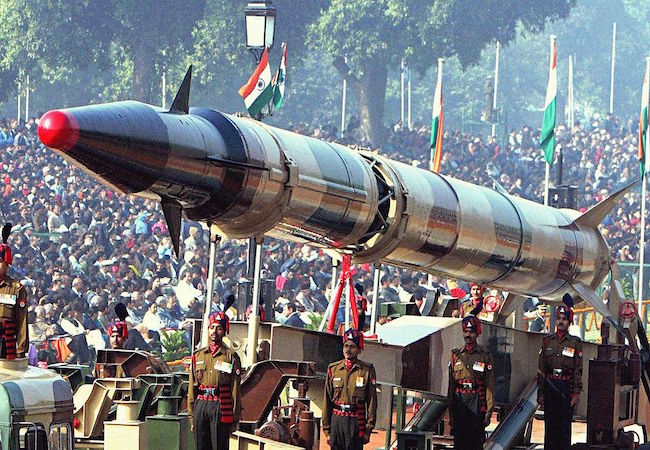
By Asma Khalid
Existence of complex security tri-lemmas among China- India-Pakistan poses a serious challenge to strategic stability of South Asia. These states share the history of the military confrontation, therefore conventional and nuclear development in one country is matter of concern for other. Number of dynamics like conventional asymmetries, nuclear offensive and defensive capabilities, arms race, ballistic missile development and absence of crisis stability mechanism has increase the fragility of strategic stability in south Asia.
Regional strategic triangle especially two strategic dyads: China-Pakistan and India-China has made the strategic landscape of South Asia more contours. In South Asian region the arms race is proportional to the India’s conventional and nuclear developments. In order to pursue its global and regional ambitions such as to cover the gap with China and superiority over Pakistan, India has increased its nuclear and missile program rapidly. Consequently, the recent developments in Indian Ballistic Missile Defence (BMD) system are the matter of great concern for the competing regional states especially for Pakistan. Developments in Indian BMD system and upcoming collaboration of India with US, Russia and Israel has added new dimensions to the regional security equation and pose the serious threat to deterrence stability.
India has started the acquisition and development of BMD system in 1990s to enhance the nuclear capabilities. Indian missile program is based on Agni and prithvi series and pursue exo-atmospheric and endo-atmospheric BMD system; moreover future objective is to acquire wholesome system. A successful test of endo-atmosphoric missile, Advance Area Defence (AAD) is notable step towards development and acquisition of two layered BMD system. Before that, on February 11, 2017, India has conducted the successful test of high altitude inceptor missile, Prithvi Defence Vehicle (PDV). According to scholars, such developments and Indian pursuit of BMD has the ability to shake the nuclear calculus of region. Subsequently, it will challenge the very basis of strategic stability and deterrence in South Asian region.
Developments in Indian BMD system depict that India is quickly heading towards higher war-fighting capabilities from its minimum deterrence posture. Though, India claims that it’s enhancing its capabilities to counter china, but according to analysts such capabilities will allow India to adopt offensive strategy over Pakistan. Indian BMD system will increase the instability and Pakistan’s security dilemma. It will force the Pakistan to improve the quality and quantity of its nuclear arsenal and it will force Pakistan to expand its military expenditure. Other interconnected issues are regarding the effectiveness of BMD and false sense of security because BMD system cannot guarantee the absolute interception and destruction of the target. So security dilemma and false sense of security will trigger the crisis instability. However, in South Asian strategic landscape where tri-angular relation exist phenomena of nuclear deterrence will become more complex and resulting in a major catastrophe.
Indian pursuit of BMD system has complicated the security calculations of regional states. It will have spillover effect on its neighboring states thus triggering and consolidating a new arms race in the region. It is imperative for Pakistan to take effectives measure to counter the volatility instigated by Indian BMD. Acquiring or manufacturing the own BMD system is least available due to economic restraints, so viable options in this regard is qualitative improvements to target the vulnerabilities of Indian BMD. In this regard, Pakistan’s surface to surface ballistic missile, Ababeel have significant contribution in the defence arrangements of Pakistan. Ababeel is capable of delivering multiple warheads using Multiple Independently target Re-entry Vehicle (MIRV) technology. It is constructive addition in the Pakistan’s defence. It will facilitate Pakistan to sustain the credibility of its deterrence strategy against Indian BMD system due to its ability to deliver multiple warheads.
Therefore, India has increased the vulnerabilities of regional states thus instigating instability and arms race. Policy options for Pakistan to counter the instability against Indian BMD system is to quantitative and quantitative improvements in its nuclear and missile capabilities in a way that I don’t have an effect on the credible strategic symmetry and avoid an arms race in the region.
Asma Khalid is a Research Associate at Strategic Vision Institute, a think-tank based in Islamabad.




